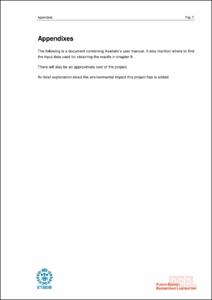Mostra el registre d'ítem simple
Adaptation of the Availsim software to the IFMIF RAMI requirements
| dc.contributor | Dies Llovera, Javier |
| dc.contributor.author | Sureda Pastor, Pere Joan |
| dc.contributor.other | Universitat Politècnica de Catalunya. Departament de Física i Enginyeria Nuclear |
| dc.date.accessioned | 2014-03-17T13:39:06Z |
| dc.date.available | 2014-03-17T13:39:06Z |
| dc.date.issued | 2013-10 |
| dc.identifier.uri | http://hdl.handle.net/2099.1/20970 |
| dc.description.abstract | Plans for the future construction of the first fusion power plant are already in movement. But before constructing a demonstration power plant (DEMO) there is much work ahead. A crucial part of this work is to choose and test the material the reactor will be constructed with. For this purpose the International Fusion Irradiation Facility (IFMIF) is being developed. IFMIF recreates the same conditions a material would suffer inside of the fusion reactor. It performs this via a D-Li (Deuterium-Lithium) neutron flux with energy of 14 MeV. This flux is provided by an accelerator. One of the greatest challenges of the IFMIF project is that the test materials condition must be as similar as possible as in a real fusion reactor. For this reason IFMIF must be able to operate continuously to provide as much test data as possible. For this reason Reliability, Availability, Maintainability and Inspectability (RAMI) analysis are required to provide the design team with enough data to reach the availability desired. The RAMI Team has created models of IFMIF in order to proper study it and improve its performance; these models have been analyzed using the professional software RiskSpectrum®. But some aspects became difficult to be modeled with RiskSpectrum® as the model grew and the complexity increased. When failure acceptance, beam degradation operation and first maintenance policies appeared, a simulation of the whole performance of the accelerator became needful. Availsim has been created in Stanford University in order to provide availability data for the design of the International Linear Collider (ILC). This software included the features needed by the RAMI team and needed to be adapted to perform with the IFMIF model. Availsim included degraded operation and allowed to repair more than one component at a time. It also allowed including manpower as a restriction to the repairs. But before its utilization by the RAMI team Availsim had to be adapted to accept and simulate the IFMIF model. New features have been added during the adaptation. Availsim is now able to perform multiple iterations during one simulation providing more reliable results. Originally Availsim only took into consideration the most common failure mode for a component. Thanks to the addition of functions multiple failure modes can be studied for each component. Availsim is now also able to decide whether to continue degraded operation or to stop operation to maximize the beam effectiveness. Degraded operation simulation and maintenance strategies allow the availability simulation to be closer to reality. The beam availability result obtained with Availsim was 84,95%, superior to the 81,25% beam availability obtained with RiskSpectrum® and closer to IFMIF availability requirements of 87,00% beam availability. |
| dc.language.iso | eng |
| dc.publisher | Universitat Politècnica de Catalunya |
| dc.subject | Àrees temàtiques de la UPC::Energies::Energia nuclear::Reactors nuclears de fusió |
| dc.subject.lcsh | Fusion reactors |
| dc.title | Adaptation of the Availsim software to the IFMIF RAMI requirements |
| dc.type | Master thesis (pre-Bologna period) |
| dc.subject.lemac | Reactors de fusió nuclear |
| dc.rights.access | Open Access |
| dc.audience.educationlevel | Estudis de primer/segon cicle |
| dc.audience.mediator | Escola Tècnica Superior d'Enginyeria Industrial de Barcelona |
| dc.provenance | Aquest document conté originàriament altre material i/o programari no inclòs en aquest lloc web |
| dc.audience.degree | ENGINYERIA INDUSTRIAL (Pla 1994) |
Fitxers d'aquest items
Aquest ítem apareix a les col·leccions següents
-
Enginyeria Industrial (Pla 1994) [3.410]



